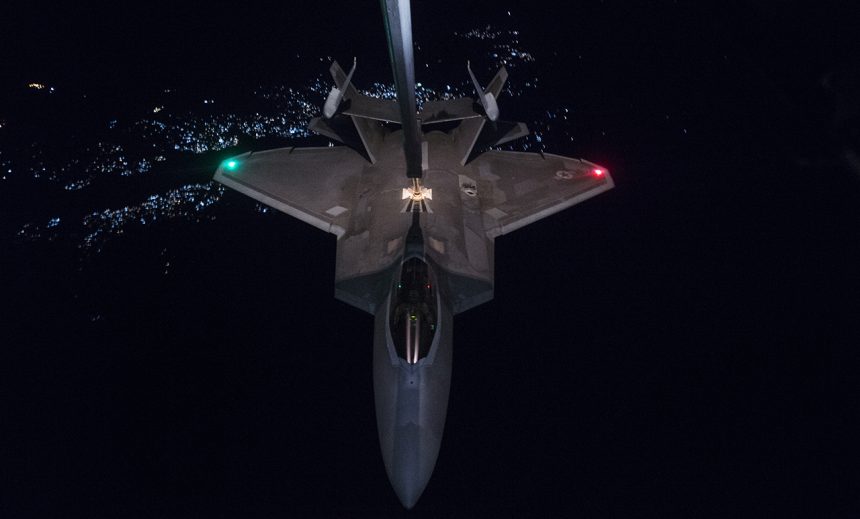U.S. F-22 Raptor Stealth Aircraft Carried Out First Raid In Afghanistan.
“Over the past 24 hours, U.S. and Afghan forces conducted combined operations to strike seven Taliban drug labs and one command-and-control node in northern Helmand province. Three of those strikes were in Kajaki district, four in Musa Qalah district and one in Sangin district,” says an official NATO press release.
The night air strikes targeted plantations of poppy (processed into illegal opiate drugs such as heroin) in Helmand Province: opiates have become a global health, economic and security problem, and the Taliban are responsible for up to 85 percent of the world’s opium production. “It’s estimated that more than $200 million of this economy goes straight into the Taliban’s bank accounts.”
Noteworthy, for the very first time, U.S. Air Force F-22A Raptors took part in the air strikes in Afghanistan “principally because of their ability to mitigate civilian casualties and inadvertent damage by employing small diameter bombs during U.S. airstrikes.” The F-22s, operated alongside B-52 bombers, Hellfire missiles fired from drones, and U.S. Marine Corps-operated High-Mobility Rocket Systems that were “pivotal in the first night of strike successes.”
The U.S. Air Force Raptor stealth multi-role jet had its baptism of fire flying Swing Role missions in support of the air war on ISIS on Sept. 23, 2014. Tasked for air-to-ground missions, the F-22 can carry two 1,000-lb GBU-32 Joint Direct Attack Munitions, along with AIM-120s AMRAAMs (Advanced Medium Range Air-to-Air Missiles) radar-guided missiles and AIM-9 Sidewinder IR-guided missiles.
Since software increment 3.1 embedded back in 2012, the F-22 can also drop 8 GBU-39 small diameter bombs, 250-lb multipurpose, insensitive, penetrating, blast-fragmentation warhead for stationary targets, equipped with deployable wings for extended standoff range. These bombs are particularly useful to improve accuracy and reduce collateral damage.
Along with the ability to carry PGMs (Precision Guided Munitions), in the last few years the aircraft were also given a radar upgrade that enhanced the F-22 capabilities in the realm of air interdiction and the so-called “kinetic situational awareness”: as we have often explained in previous articles, the role that the Raptor plays in Operation Inherent Resolve is to use advanced onboard sensors, such as the AESA (Active Electronically Scanned Array) radar, to gather valuable details about the enemy targets, then share the “picture” with attack planes as the F-15E Strike Eagles.
Interestingly, in an interview given at the end of 2013, General Hawk Carlisle said 5th generation aircraft would provide forward target identification for strike missiles launched from a surface warship or submerged submarine, in the future. The PACAF commander described the ability of the F-22s, described as “electronic warfare enabled sensor-rich aircraft,” to provide forward targeting through their sensors for submarine based T-LAMS (cruise missiles).
The F-22s were supported by KC-10 Extender from the 908th Expeditionary Air Refueling Squadron, also based at Al Dhafra Air Base, United Arab Emirates, during their first action in Afghanistan in the night of Nov. 20.









